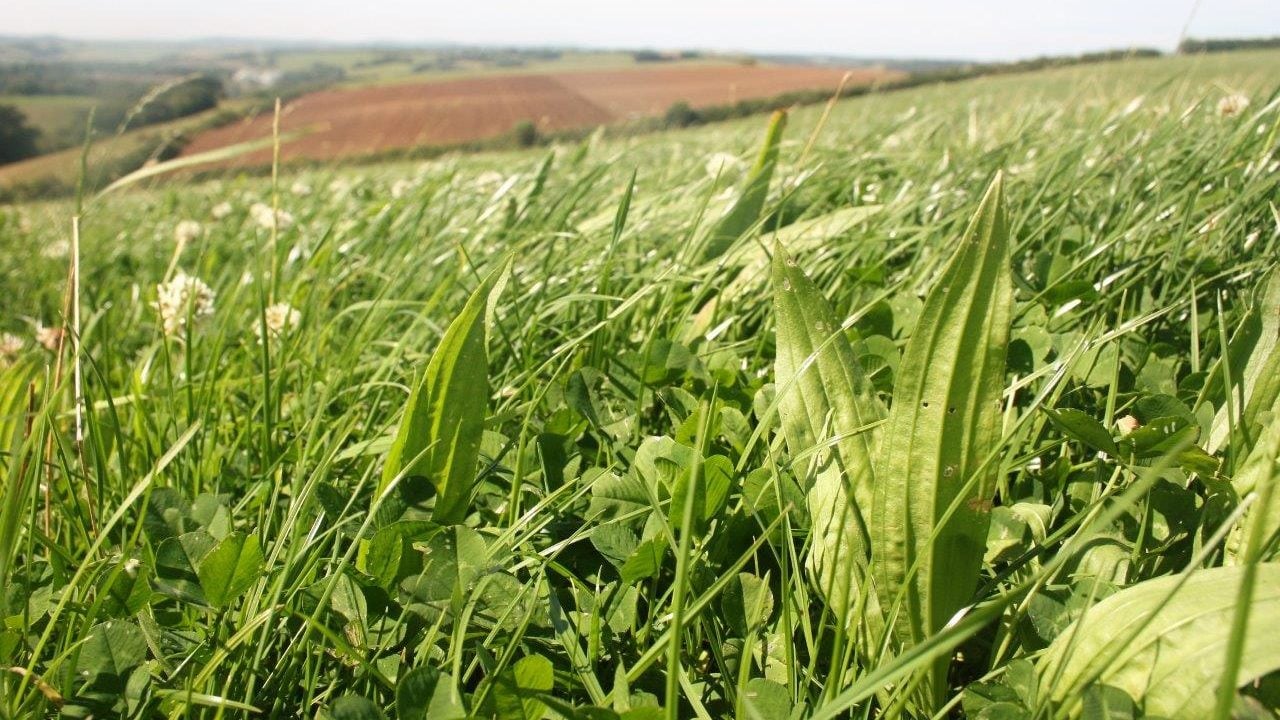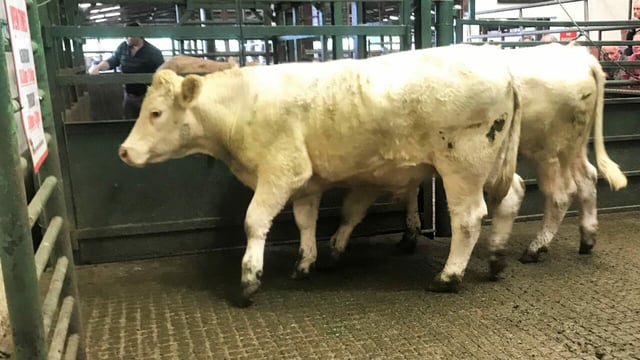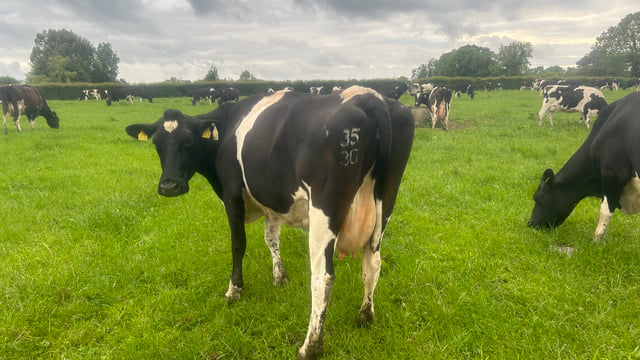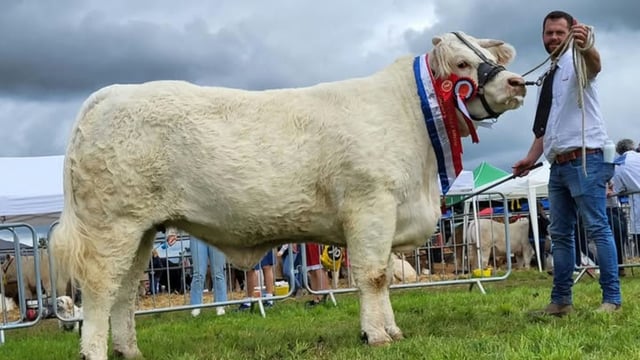Intensive grazing: How do multi-species and grass clover compare?
Multi-species swards (MSS) and grass clover have been proven to reduce your chemical nitrogen (N) fertiliser use and minimise N losses to the environment, but do cows respond well to it in terms of performance?
There is no doubt that farmers have gained more interest in MSS and grass clover to reduce their chemical and environmental impact, and this was highlighted at the Teagasc Johnstown Castle open day.
The drier summers and wetter winters may see the benefits of MSS come into play, as they have the potential to increase sward diversity.
The amount of nitrogen (N) and potassium (K) you can spread has been limited and can be monitored, with the introduction of the National Fertiliser Database.
Multi-species will fixate N, meaning the amount of N application needed on these paddocks will be reduced, giving a small bit of leeway to spread more on paddocks that may require it.
A study which was carried out by Teagasc compared the herbage and milk production of two groups of holstein friesian cows, grazing either a grass clover sward or MSS.
The grass clover sward contained perennial ryegrass and white clover, while the MSS contained perennial ryegrass; timothy; white clover; red clover; plantain and chicory.
The grazing was managed on a rotational basis and the two treatments produced a similar milk yield of similar compositional quality across the first four years of the study.
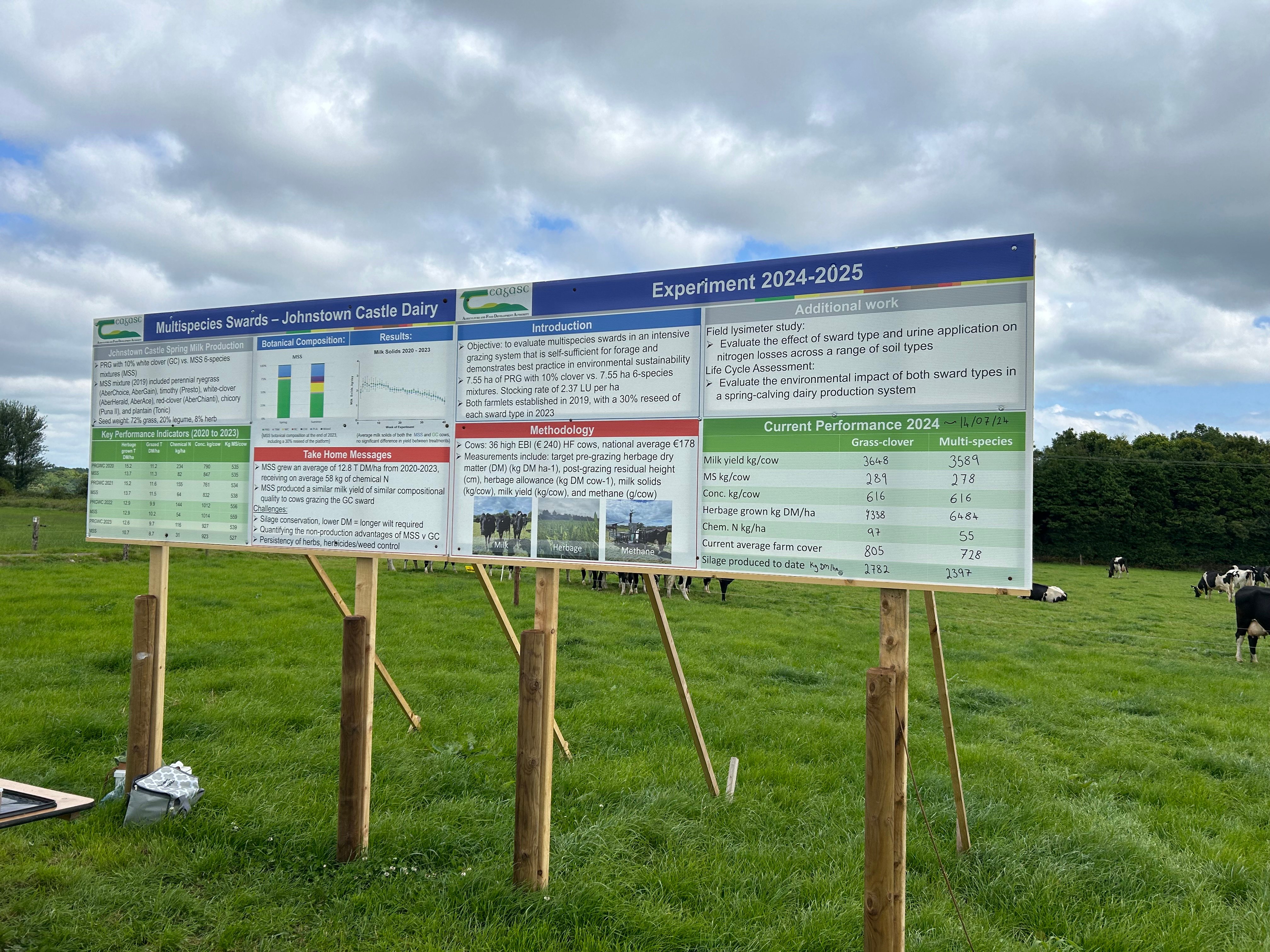
Across the studies timeline, the MSS grew an average of 12.8t dry matter (DM)/ha, while receiving an average of 58kg of chemical N.
The grass-clover grew an average of 13.9t DM/ha, while receiving 162kg of chemical N.
The silage conservation of the MSS was of a lower DM and it required a longer wilting period. The persistency of the herbs within the MSS was difficult to control, while using herbicides to control the weeds was difficult.
The further study of MSS compared to grass-clover evaluates the MSS in an intensive grazing system that is self-sufficient for forage and demonstrates best practice in environmental sustainability.
The grass-clover and MSS plots are stocked at 2.37 LU/ha, with 30% (7.55ha) of each each plot being reseeded in 2023, with similar herbage and cow key performance indicators being measured.
The methodology was to measure target pre-grazing herbage DM, post-grazing residual height, herbage allowance, milk solids, milk yield and methane.
There is also a plan to conduct an evaluation of the effect of the sward type and urine application across a range of soil types using the infield lysimeter facility at Johnstown Castle over the coming years.
The performance to date in 2024 is as follows:
| Grass-clover | Multi-species | |
|---|---|---|
| Milk Yield (kg/cow) | 3,648 | 3,589 |
| Milk solids (kg/cow) | 289 | 278 |
| Concentrates (kg/cow) | 616 | 616 |
| Herbage grown (kg DM/ha) | 7,388 | 6484 |
| Chemical N (kg/ha) | 97 | 55 |
| Current average farm cover | 805 | 728 |
| Silage produced to date | 2,782 | 2,397 |
As you can see from the figures above, the MSS is not far behind the grass-clover in terms of performance for a lot less chemical N spread.
It does beg the question, considering the much less N requirements to grow similar herbage, which in turn produces similar milk yields and solids, should MSS be incorporated into more Irish dairy systems?

